 |
 |
 |
 |
 |
 |
One think about Worick – everyone he goes, people know the part he’s playin’.
I’m not a fan of every trend in modern anime by any means – I’ve made no secret of the fact that I think the medium’s overall body of work since the start of 2013 is substandard in a historical context. But the last couple of seasons have definitely seen a trend that I approve of, and that’s an increased awareness and acknowledgement of anime’s history. It doesn’t always work – most of the attempts to bottle vintage Gainax have ultimately failed – but sometimes it does. And it’s nice to see an attempt to capture something that exists outside the narrow commercial boxes that define most anime these days.
When you watch a show like Kyoukai no Rinne, it’s easy enough to understand why that old-school vibe exists. Shows like Jitsu wa Watashi wa are a little harder to explain, but feel no less authentic. Then we have Gangsta, which unapologetically harkens back to an entirely different style of anime that was popular fifteen or twenty years ago. We’re looking at pure storytelling here, something that’s not concerned with checking off boxes (which will no doubt punish it when it comes to disc sales, as Stalker already predicts). I see a show like this, and it seems to me that it’s better suited to American late-night TV than Japanese Blu-rays – which might be a reflection of just how far behind current trends many Western anime fans are, if nothing else.
I’m very impressed with an awful lot about Gangsta – the cast, the music, the direction, the writing. This is an immersive experience in the best sense, a show that really brings you into its fictional universe and makes it feel like a very real place. I’m also impressed with the exposition, which expertly gives us enough pieces of the puzzle to tempt us to guess about the final picture, but without spoiling the mystery – and does so while never seeming clumsy or forced. A lot of what we learn comes from watching behavior, which is the toughest form of exposition to write but easily the most organic and effective when it works.
I don’t think it comes as a huge shock that Worick Arcangelo is a male prostitute, a gigolo, as it’s been strongly hinted at over the first two episodes (though perhaps hearing that it’s his “main job” is a bit of a surprise). But that’s the tip of the iceberg – it’s how he got to this point that’s the real story. Again, we gets bits and pieces enough to hazard a guess – seemingly he was the second-youngest son of a rich family. His entire family seems to have been murdered (22 years earlier, when he was 13) and the young Worick taken hostage – but the real shocker here is that it’s strongly suggested that murder was carried out by Nick, at the bidding of a major crime syndicate. Worick ended up on the streets of Ergastulum, turning to boy prostitution in the brothel (imaginatively named “Pussy”) of “Big Mama” Georgina (Yokoo Mari) at the tender age of 14 (whatever we might assume, their relationship is suggested at by her maternal ruffling of his hair).
That’s a lot to wrap the mind around – how exactly would Worick have ended up partners with the guy who killed his entire family? There are many other tantalizing trails for us to follow, unsure where they lead. We’re told that the Twilights suffer a “drug-induced” condition (a side-effect of which is inability to experience pain). We learn that one of Nick and Worick’s many jobs is to deliver drugs from Dr. Theo – “Uppers” and “Downers”, presumably for Twilghts, one of whom is in Georgina’s house and near death, and very important to Nicolas. We also meet a couple of new faces – mid-level hood Marco (Sakurai Takahiro), taking a delivery, and Daniel Monroe (Houki Katsuhisa, one of anime’s great little-known character actors), who tries to hire Nick “back” into his syndicate (unsuccessfully).
If you step back and take this all in, I have to fall back on the same metaphor – a picture is being painted here. The exposition is part of it, but it goes beyond that to simply the mood and expression of the piece – we’re seeing Ergastulum as a refuge for refuse, a haven for lost souls and society’s garbage. Seeing, for example, Nic, Worick and Alex happen on a gangland execution being carried out (by Monroe’s men) is powerful and disturbing because of how the characters react. Nic and Alex meet the brutality with complete detach, which tells you everything you need to know about this place, but Allie is the one who reacts the way you or I would – with horror. It’s no wonder that Worick urges her to get the hell out of Dodge while she still can, before she stays long enough that she’s too tainted to ever leave – but we know she’s not going anywhere.
This is a bleak portrait, no question about it, but as brutal as Gangsta is it never quite falls into abject Nihilism and despair. Worick, Alle and Nic are recognizably human despite living in this dehumanizing place, and they’re not the only ones. As long as people who’ve been pissed on by society for their entire lives are still willing to try and be decent to each other, somehow hope still flickers on – and in no one is this more profoundly displayed than Nicolas. He’s feared and reviled for what he is, a “tag” – someone seemingly made the way he is by society for its own purposes. He’s incredibly terrifying and brutal, yet in no one is the desire to be something more and better more obvious. The roots of this sort of story are much deeper and older than the generation of anime that often tapped into them, but Gangsta strongly recalls that generation in a vastly entertaining and engrossing way.
 |
 |
 |
 |
 |
 |
 |
 |
 |
 |
 |
 |
 |
 |
 |
 |
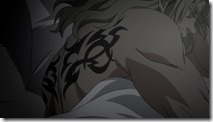 |
 |
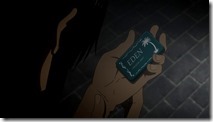 |
 |
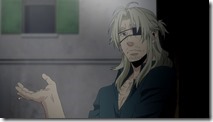 |
 |
 |
 |


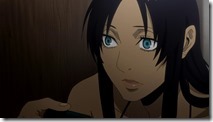
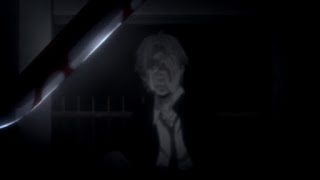
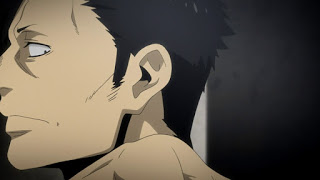

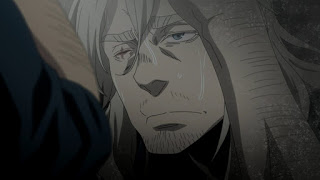
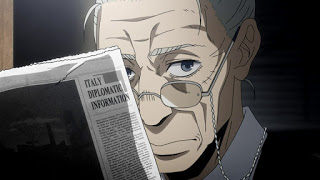
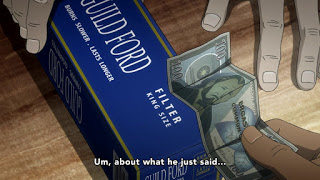

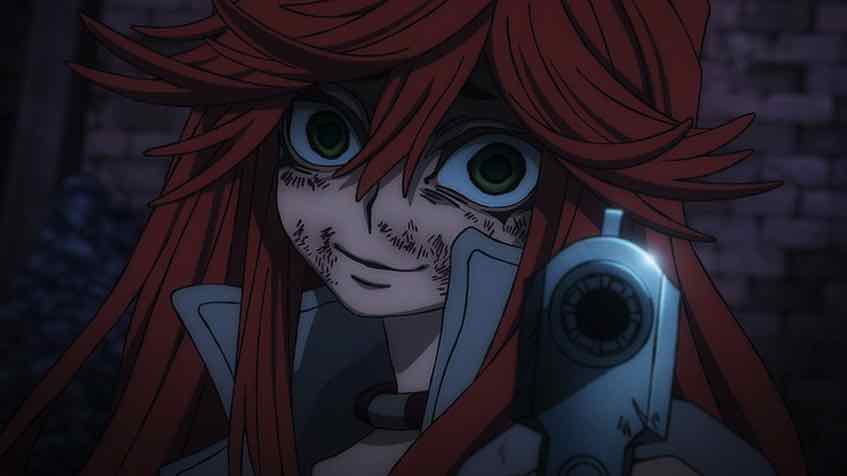

sonicsenryaku
July 16, 2015 at 6:17 amgangsta keeps me engaged with it's quiet storytelling and this was even more so in this ep. Also there is something telling about the way worick reacted to that prostitute who pretty much alluded to something regarding the twilights
Simone
July 16, 2015 at 8:38 amCheck the body removers at 13:19. What is Ginko doing, working with the mafia in Ergastulum?
BigFire
July 16, 2015 at 5:28 pmWorwick's arrest poster when he was 17 starts out with prostitution, so it's not exactly a spoiler.
Earthling Zing
July 17, 2015 at 5:03 pmYou rarely see so much information being dished out without direct immediate explanation. Kind of feels like a novel, which is painfully rare in anime these days. Some parts of the show are a little too fantastical for my tastes and Alex is quite blatantly expository sometimes, but overall I really like it.
melodic thoughts
July 18, 2015 at 9:17 amJust rendering a guess here.
Nicolas and Worick may have plotted something against the family (theft?), but it escalated out of control and it ended as murder of a whole family. I assume Nicolas was already a Twilight then (not much information were given about them though), so it can be easy to lose control and go on a rampage.
Based on the titbits of information scattered around the narrative, Worick doesnt seem to have lived well in that family. And given their current trust and bonds in their friendship, we can assume they had always been pretty close and this murder should be to an extent, consensual